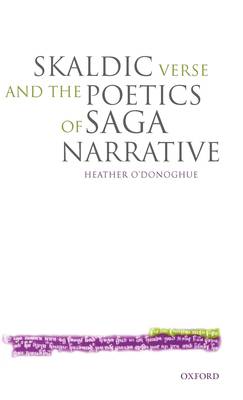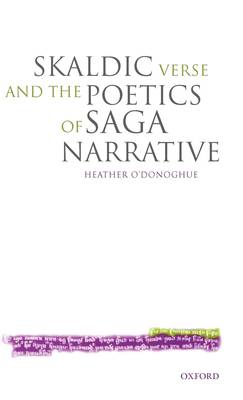
- Afhalen na 1 uur in een winkel met voorraad
- Gratis thuislevering in België vanaf € 30
- Ruim aanbod met 7 miljoen producten
- Afhalen na 1 uur in een winkel met voorraad
- Gratis thuislevering in België vanaf € 30
- Ruim aanbod met 7 miljoen producten
Zoeken
€ 298,45
+ 596 punten
Omschrijving
Skaldic Verse and the Poetics of Saga Narrative is a study of the varying relationships between verse and prose in a series of Old Norse-Icelandic saga narratives. It shows how the interplay of skaldic verse, with its metrical intricacy and cryptic diction, and saga prose, with its habitual spare clarity, can be used to achieve a wide variety of sophisticated stylistic and psychological effects. In sagas, there is a fundamental distinction between verses which are ostensibly quoted to corroborate what is stated in the narrative, and verses which are presented as the speech of characters in the saga. Corroborative verses are typical of, but not confined to, historical writings, the verses acting as a footnote to the narrative. Dialogue verses, with their illusion that saga characters break into verse at crucial points in the story, belong to the realm of fiction. This study, which focuses on historical writings such as Ágrip and Heimskringla, and three of the major family sagas, Eyrbyggja saga, Gisla saga and Grettis saga, shows that a close reading of the prosimetrum in the narrative can be used to chart the complex and delicate boundaries between history and fiction in the sagas. When skaldic stanzas are presented as the dialogue of saga characters, the characteristic naturalism of these narratives is breached. But some saga authors, as this book shows, extend still further the expressiveness of saga narrative, presenting skaldic stanzas as the soliloquies of saga characters. This technique enables the direct articulation of emotion, and hence dramatic focalization of the narrative and the creation of psychological climaxes. As an epilogue, Heather O'Donoghue considers the absence of such effects in Hrafnkels saga--a highly literary narrative without verses.
Specificaties
Betrokkenen
- Auteur(s):
- Uitgeverij:
Inhoud
- Aantal bladzijden:
- 264
- Taal:
- Engels
Eigenschappen
- Productcode (EAN):
- 9780199267323
- Verschijningsdatum:
- 13/10/2005
- Uitvoering:
- Hardcover
- Formaat:
- Genaaid
- Afmetingen:
- 140 mm x 216 mm
- Gewicht:
- 485 g

Alleen bij Standaard Boekhandel
+ 596 punten op je klantenkaart van Standaard Boekhandel
Beoordelingen
We publiceren alleen reviews die voldoen aan de voorwaarden voor reviews. Bekijk onze voorwaarden voor reviews.











